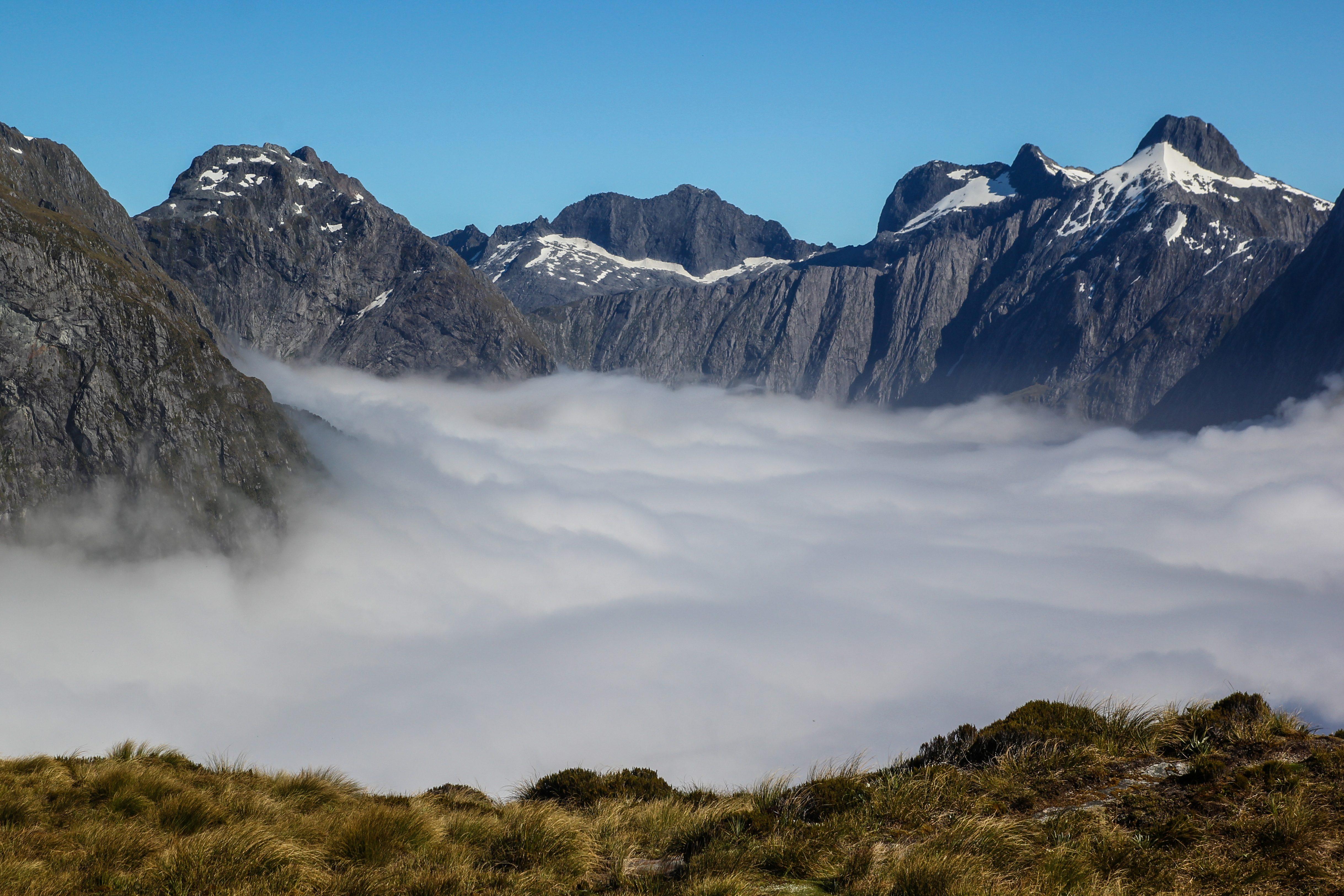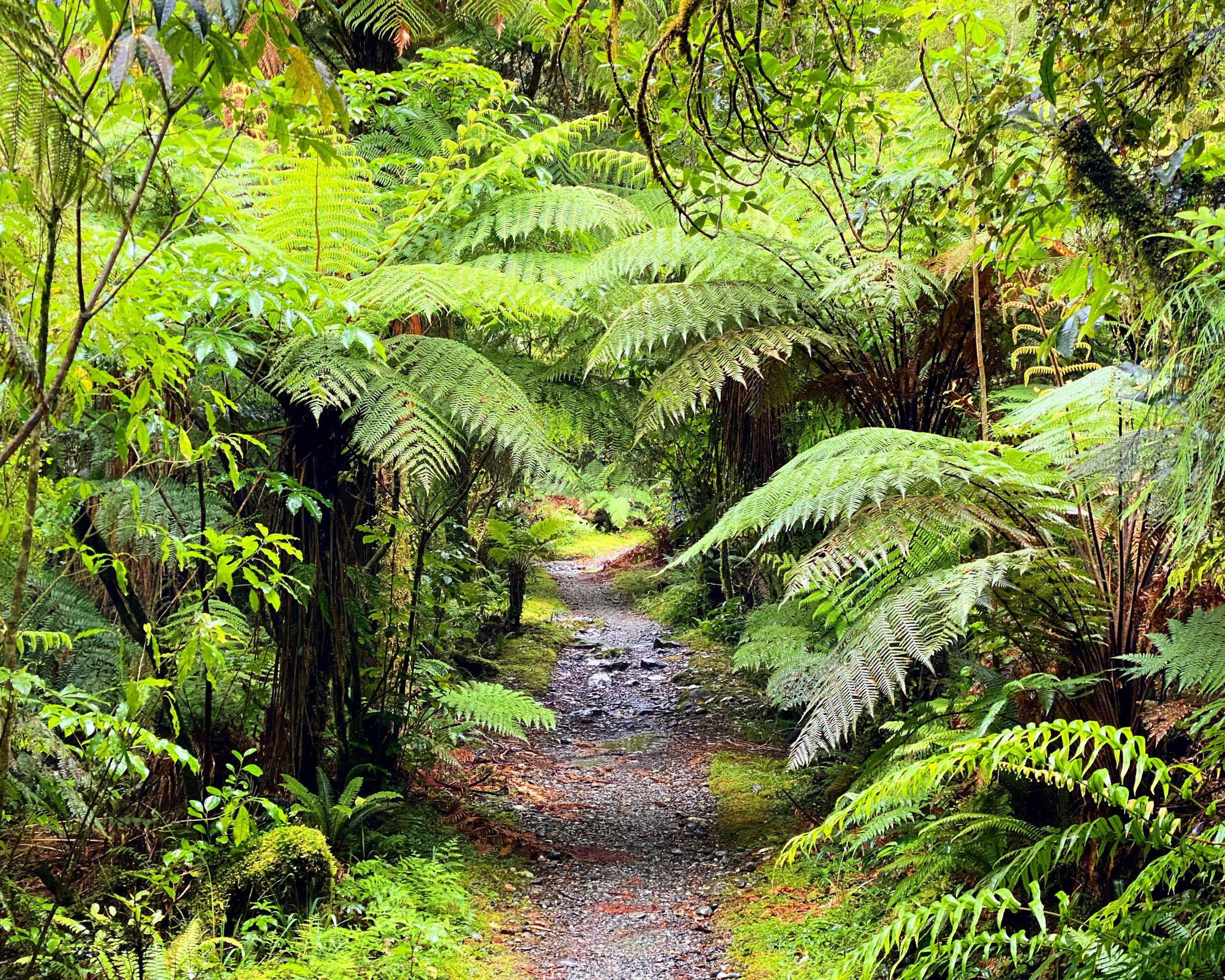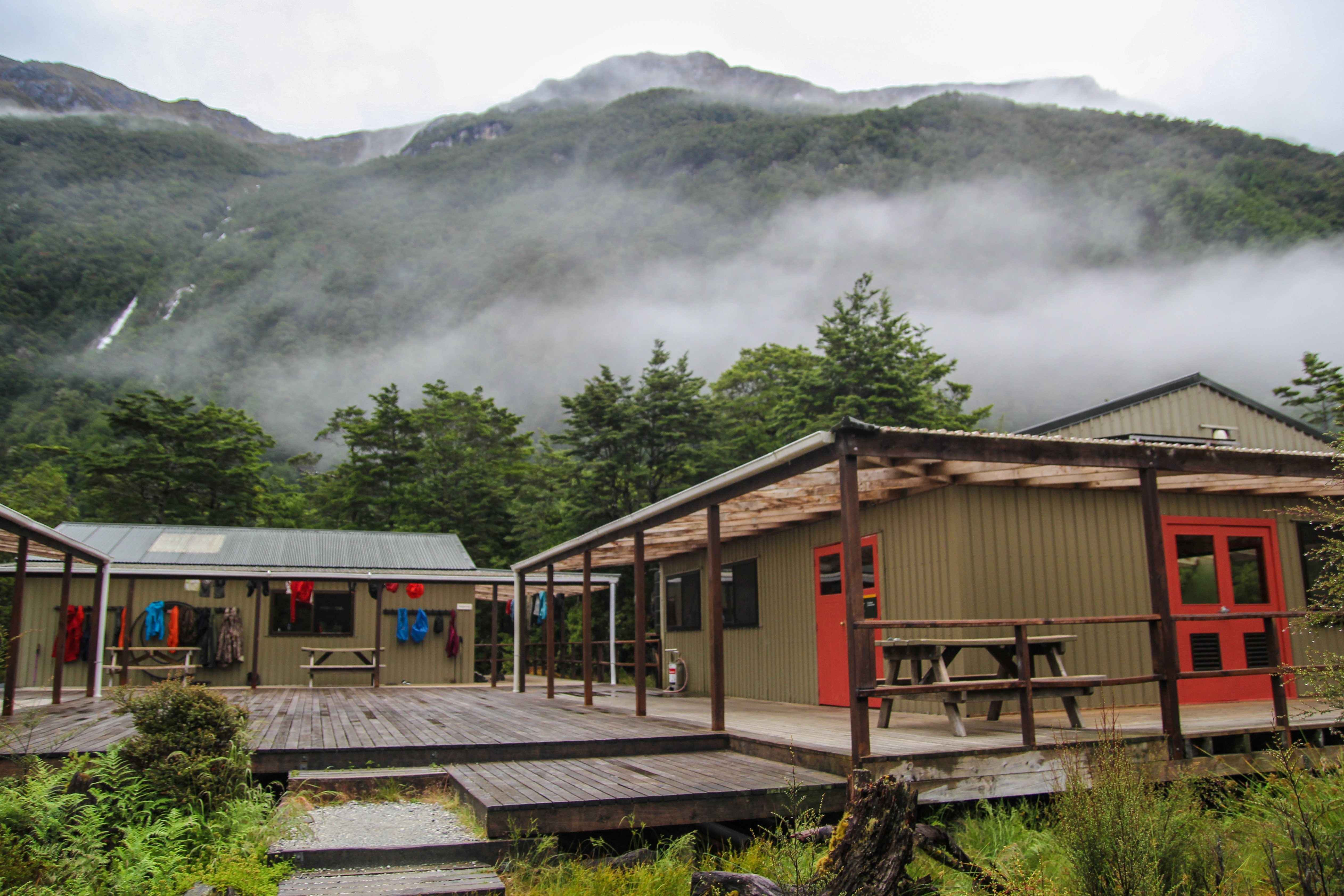Experience New Zealand’s Legendary Wilderness Trail
The Milford Track is a 53.5 km alpine route through Fiordland National Park, offering a powerful mix of raw scenery, silence, and solitude. Starting at Glade Wharf, a short boat ride from Te Anau Downs, the trail winds through moss-covered beech forest, along glacier-fed rivers, and over the dramatic Mackinnon Pass before descending into the lush Arthur Valley and finishing at the majestic Milford Sound.
Over four days, hikers pass pristine lakes, swing bridges, and towering waterfalls — including the awe-inspiring Sutherland Falls at 580 metres. Each day covers between 13 and 21 kilometres on a well-maintained trail, allowing for a steady pace and plenty of time to take in the breathtaking surroundings. The track is one way only, walked from south to north, and open seasonally from late October to late April.
What to Know Before You Hit the Trail
To hike the Milford Track independently, you’ll need to reserve a space in each of the three Department of Conservation (DOC) huts along the route: Clinton Hut, Mintaro Hut, and Dumpling Hut. These backcountry huts are simple but well-equipped, offering bunk beds with mattresses, flush toilets, running water, and shared kitchen shelters with gas stoves (no utensils or cookware provided). Hut bookings are essential and tend to fill up quickly, especially during the Great Walks season from late October to late April.
The Milford Track is a remote backcountry experience, so walkers must carry everything they need for four days – including food, clothing, sleeping bag, cooking equipment, and wet-weather gear. Mobile phone coverage is non-existent and weather conditions can shift dramatically, with sun, rain, wind, and even snow possible in a single day. While the trail is well-marked and maintained, it’s your preparation that ensures a safe and enjoyable journey through one of New Zealand’s most spectacular wilderness landscapes.

Milford Track Essentials for Independent Hikers
- 4-day, 53.5 km one-way trail from Glade Wharf to Milford Sound
- Stay in DOC huts: Clinton, Mintaro, and Dumpling (bookings required)
- Each hut includes bunks, mattresses, toilets, and communal kitchens
- Bring your own food, stove, sleeping bag, and cookware
- No camping allowed – hut bookings are mandatory in season
- Weather can change rapidly – prepare for cold, rain, and sun
- No shops or phone reception on the trail
- Pack light but include layers, waterproofs, and basic first aid
- Boat transfers to/from Glade Wharf and Sandfly Point must be pre-booked
- Best time to walk: November to April (Great Walks season)
The Milford Track is one of New Zealand’s most iconic multi-day hikes, stretching 53.5 km through the heart of Fiordland National Park. This one-way, four-day trail takes walkers from the head of Lake Te Anau to the majestic Milford Sound, passing through lush rainforest, alpine passes, and dramatic valleys. With limited numbers and well-equipped DOC huts, it’s a peaceful and immersive way to experience a UNESCO World Heritage landscape.
4-Day Milford Track Itinerary Overview
Day 1: Te Anau to Clinton Hut (5 km, 1–1.5 hrs)
Begin with a boat ride across Lake Te Anau, followed by a short, easy forest walk to Clinton Hut.
Day 2: Clinton Hut to Mintaro Hut (16.5 km, 5–6 hrs)
Follow the Clinton River through a glacial valley, with towering peaks and waterfalls, ending at the base of Mackinnon Pass.
Day 3: Mintaro Hut to Dumpling Hut (14 km, 6–7 hrs)
Climb over Mackinnon Pass (1,154 m), enjoy panoramic views, and descend into the Arthur Valley, passing Sutherland Falls.
Day 4: Dumpling Hut to Sandfly Point (18 km, 5.5–6 hrs)
Walk through lush rainforest along the Arthur River to Sandfly Point. A short boat transfer takes you to Milford Sound.

The Milford Track is a nature lover's paradise with a rich array of flora and fauna.
Flora: The track passes through dense rainforests dominated by red and silver beech trees, rimu, and totara. As you ascend towards the Mackinnon Pass, the vegetation changes to alpine shrubs and tussock grasses. Several varieties of ferns, mosses, and lichens thrive in the humid conditions of the forest floor. Along the rivers and wetland areas, you may find flax, raupo, and kahikatea trees. The area is known for its orchids, and in summer, Mount Cook lilies and other alpine flowers bloom, creating a beautiful landscape.
Fauna: The Milford Track is home to a variety of bird species. You may encounter the tui, bellbird, fantail, riflemen, grey warbler, New Zealand pigeon, and the elusive kiwi bird. Kea, the world's only alpine parrot, might be seen (and heard!) in the higher areas. You might spot whio (blue ducks) along the rivers, and paradise shelducks are common around the huts. Native bats, long and short-tailed, are also inhabitants of the forest, though they are rarely seen.
In terms of larger wildlife, it's not uncommon to see red deer along the track, as well as the occasional stoat or possum.
Invertebrates are also abundant, and in some areas, you'll notice the sandflies for which Fiordland is famous. Make sure to pack insect repellent!
New Zealand's Fiordland is a conservation area and efforts are in place to protect and preserve this unique biodiversity. Always remember to follow the guidelines to ensure the preservation of these natural wonders for future generations.

Accommodation along the Milford Track is provided in the form of comfortable huts managed by the Department of Conservation (DOC). There are three huts for independent walkers: Clinton Hut, Mintaro Hut, and Dumpling Hut. Each hut is spaced out to divide the track into manageable sections for each day's walk.
Hut Facilities:
Bunks: Each hut has communal bunkrooms with mattresses. You will need to bring your own sleeping bag.
Kitchen: The huts have communal cooking areas equipped with sinks, water, and gas cooktops. You'll need to bring your own cooking utensils, plates, and cups.
Bathrooms: Each hut has bathroom facilities with flushing toilets. Toilet paper is provided, but you will need to bring your own soap and other toiletries.
Heating: The huts are equipped with heating, but there's no guarantee of warmth, so be prepared with warm clothing and a good sleeping bag.
Lighting: Solar lighting is provided in the communal areas of the huts, but it's recommended to bring a headlamp or torch for evenings and night-time.
Booking:
The huts along the Milford Track are extremely popular, and booking is required during the Great Walks season (late October to late April). Huts generally open for bookings in April or May. It's important to book as early as possible, as huts on the Milford Track book out within minutes of reservations opening. To optimise your chances, it is essential to contact us in advance, and advise a range of dates that would be suitable. This gives the reservations team the best chance of securing a spot for you.
Please note that camping is not permitted along the track, and there are no shops or places to buy food or gear, so you will need to carry everything you need for the duration of your trek. The aim is to leave as little impact as possible on this beautiful environment.
In addition to the DOC huts, there are private lodges available for those doing a guided walk. These offer a higher level of comfort, including meals and bedding.

Training: Although the Milford Track isn't technically demanding, it does require a moderate level of fitness due to its length and some steep sections. It's a good idea to start regular walking or hiking several weeks before your trip to build up your endurance.
Pack Wisely: Pack light but ensure you have all essentials. This includes warm clothing (temperatures can drop quickly), waterproof gear (Fiordland is known for heavy rain), a good quality sleeping bag, cooking utensils, high-energy food, water purification tablets, first aid kit, map, compass, and a torch.
Footwear: Comfortable, sturdy, and waterproof hiking boots are a must. Make sure they are well broken-in before you start the track to avoid blisters.
Leave No Trace: Respect the environment by carrying out all rubbish, sticking to the marked trail, and not removing any natural objects or disturbing wildlife.
Stay Safe: Inform someone of your plans before you leave. Keep an eye on the weather forecast and be prepared for sudden changes, as the weather in Fiordland can be unpredictable. Always sign the hut books so your progress can be tracked in case of an emergency.
Respect Hut Etiquette: Space in huts is often limited, so respect others' space, keep noise to a minimum, and leave facilities clean for the next users.
Stay Hydrated and Keep Energy Levels Up: Drink plenty of water and eat high-energy food to keep your energy levels up. The tap water in huts needs to be treated before drinking.
Prepare for Sandflies: Sandflies can be a nuisance in Fiordland, especially at Sandfly Point. Bring insect repellent.
Take Your Time: It's not a race. The Milford Track is stunning, and you should take the time to enjoy it. Stop regularly, take photos, enjoy the sights and sounds, and rest when you need to.
Remember, preparation is key to having an enjoyable and safe hiking experience on the Milford Track.
The history and culture of the Milford Track is steeped in both Māori legends and the exploration tales of European settlers.
Māori History: The Fiordland region was well known to local Māori long before European explorers arrived. Māori tribes would traverse the area in search of pounamu (greenstone or jade), a highly prized material used in tools, weapons, and jewellery. The Milford Track follows part of a route known to Māori as Te Hīkoi o te Kīwai, which loosely translates to "the journey of the pack strap".
European Exploration: The Milford Track as we know it was discovered by Europeans in the 1880s. Quintin McKinnon and Donald Sutherland were commissioned to find a land route to Milford Sound. In 1888, McKinnon discovered the pass that now bears his name, completing the overland route. Sutherland had previously discovered the majestic Sutherland Falls in 1880, one of the highlights of the track.
Modern History: The Milford Track quickly gained fame as a tourist route. Early tourists were rowed up Lake Te Anau to the start of the track and guided on foot to Milford Sound, where they then took a steamship. The track was described as the 'finest walk in the world' by poet Blanche Baughan in a London newspaper in 1908, a moniker that has stuck.
The track is now managed by the New Zealand Department of Conservation. It has been meticulously maintained and upgraded over the years, with sturdy bridges, boardwalks, and well-equipped huts. Despite these modern conveniences, walking the track still offers a sense of the adventure and discovery that those early explorers must have felt over a century ago.
